When you decide to raise backyard chickens, selecting the right breed can make all the difference. You’ll want to ponder factors like climate, egg production, and even your family’s lifestyle.
For instance, if you have kids, gentle breeds like Silkies or Buff Orpingtons might be a great fit. But what if you live in an area with harsh winters or sweltering summers?
There are breeds specifically suited to thrive in those conditions. And what about egg production – are you looking for a breed that’ll give you a steady supply?
You’re about to discover the best chicken breeds for beginners to fit all situations.

Key Takeaways
- Silkie, Polish, and Buff Orpington breeds are ideal for families with children due to their gentle and affectionate nature.
- Chantecler, Brahma, and Ameraucana breeds thrive in cold climates, while Egyptian Fayoumi and Turkana excel in hot desert environments.
- Leghorns, Rhode Island Reds, and Barred Rocks are top picks for beginners due to their high egg production, with some laying up to 300 eggs per year.
- Easy care chicken breeds like Leghorns, Rhode Island Reds, and Barred Rocks require minimal fuss and are perfect for busy owners.
- Smaller chicken breeds like Silkie, Polish, and Bantam are suitable for backyard flocks with limited space, making them a great choice for urban dwellers.
Best Chicken Breeds For Beginners Compared
| Breed | Type | Egg Laying | Meat Production | Temperament | Hardiness | Heat Tolerance | Cold Tolerance | Ease of Care |
|---|---|---|---|---|---|---|---|---|
| Leghorn | Egg Layer | 5 | 2 | 3 | 4 | 4 | 3 | 4 |
| Rhode Island Red | Dual-Purpose | 5 | 4 | 4 | 5 | 4 | 4 | 4 |
| Plymouth Rock | Dual-Purpose | 4 | 4 | 4 | 5 | 4 | 5 | 5 |
| Australorp | Dual-Purpose | 5 | 3 | 5 | 5 | 4 | 5 | 5 |
| Sussex | Dual-Purpose | 4 | 4 | 5 | 5 | 4 | 4 | 4 |
| Orpington | Dual-Purpose | 4 | 4 | 5 | 5 | 4 | 5 | 5 |
| Wyandotte | Dual-Purpose | 4 | 4 | 4 | 5 | 4 | 5 | 4 |
| Delaware | Dual-Purpose | 4 | 4 | 4 | 5 | 4 | 4 | 4 |
| New Hampshire Red | Dual-Purpose | 4 | 4 | 4 | 5 | 4 | 4 | 4 |
| Brahma | Dual-Purpose | 3 | 4 | 4 | 5 | 3 | 5 | 4 |
| Cornish Cross | Meat Bird | 2 | 5 | 3 | 3 | 3 | 3 | 3 |
| Jersey Giant | Meat Bird | 3 | 4 | 4 | 4 | 3 | 4 | 3 |
| Silkie | Specialty | 2 | 2 | 5 | 4 | 4 | 4 | 5 |
| Polish | Specialty | 4 | 2 | 5 | 5 | 4 | 4 | 5 |
| Cochin | Specialty | 3 | 3 | 5 | 4 | 3 | 5 | 4 |
Friendly Breeds for Families
When selecting a chicken breed for your family, consider the gentle and affectionate Silkie, Polish, or Buff Orpington, which are renowned for their calm and docile nature, making them an excellent choice for families with children.
These breeds are known for their kid-friendly personalities, allowing your little ones to interact with them safely and confidently.
They’ll provide your family with pet-like companionship, often following you around the backyard and enjoying cuddles and attention.

The Silkie, with its soft, fluffy feathers, is a favorite among children, while the Polish breed is known for its gentle clucking and affectionate nature.
The Buff Orpington, with its golden feathers, is a popular choice for families due to its friendly and docile temperament.
All three breeds are easy to handle and care for, making them perfect for families new to backyard chicken-keeping.
With their calm demeanor and loving nature, these breeds will quickly become beloved members of your family, providing hours of entertainment and companionship for kids and adults alike.
Cold-Hardy Breeds for Winter
As you prepare your backyard flock for the cold winter months, you’ll want to ponder breeds that can withstand freezing temperatures and harsh weather conditions, such as the Chantecler, Brahma, or Ameraucana, which are specifically bred to thrive in cold climates.
These breeds have evolved to adapt to winter climates, boasting remarkable frost tolerance.
The Chantecler, originating from Canada, is renowned for its exceptional cold hardiness, withstanding temperatures as low as -20°F (-29°C).
The Brahma, hailing from India, has a thick, dense coat that shields it from the chill, while the Ameraucana, with its South American roots, has a unique feather structure that traps warm air close to its body.
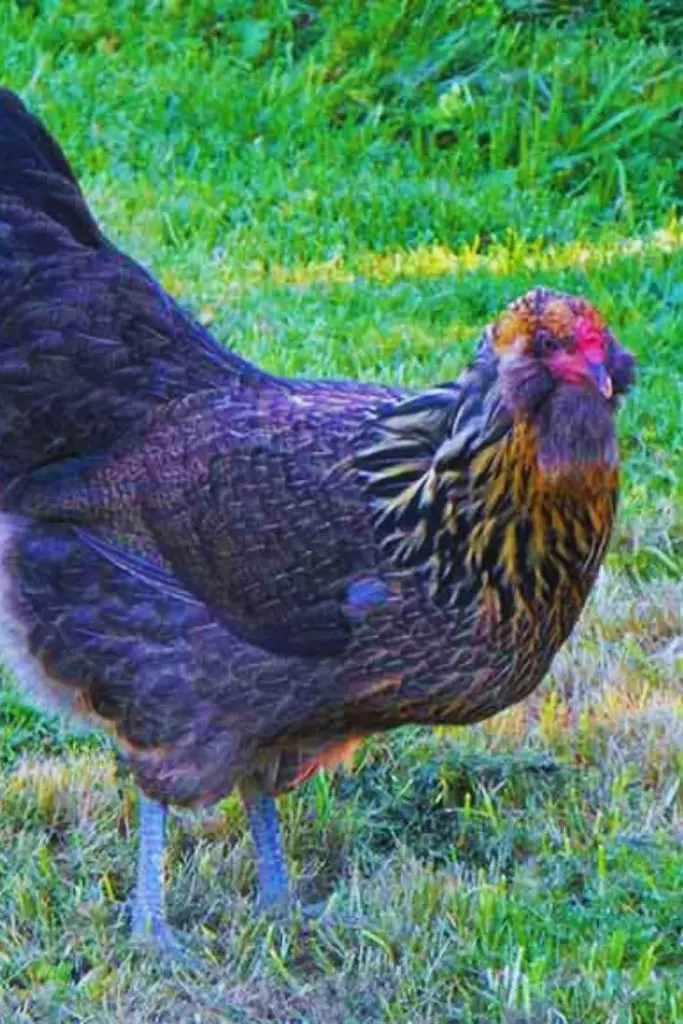
When selecting a cold-hardy breed, consider factors such as feather density, body size, and comb size, as these traits can impact their ability to withstand winter’s chill.
Heat-Tolerant Breeds for Summer
As you prepare your flock for the sweltering summer months, you’ll want to ponder chicken breeds that can thrive in high temperatures.
You’ll need birds that can withstand the heat, and that’s where desert-adapted breeds, high-temperature egg layers, and drought-tolerant fowl choices come in.
Desert-Adapted Chicken Breeds
Your flock will thrive in scorching temperatures with desert-adapted chicken breeds, specifically bred to withstand the blistering heat of summer.
These breeds have evolved to excel in desert climates, where temperatures often soar above 100°F (38°C). The desert climate benefits these breeds, allowing them to develop unique characteristics that enable them to conserve water and regulate their body temperature efficiently.
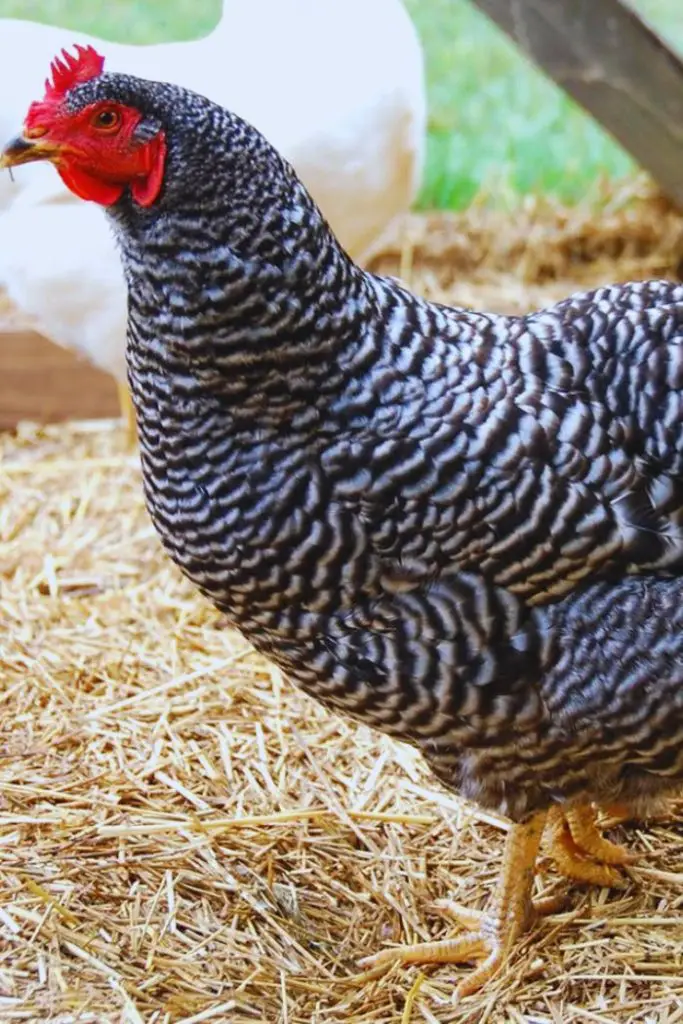
Arid region characteristics, such as intense sunlight and low humidity, have led to the development of breeds with specialized features. For instance, the Egyptian Fayoumi has a lightweight, single-comb breed that helps to dissipate heat, while the Turkana boasts a unique, dark-colored plumage that absorbs heat and protects it from the intense desert sun.
These breeds have also developed exceptional foraging abilities, allowing them to search for food and water in the harsh desert environment. By choosing desert-adapted breeds, you’ll guarantee your flock remains healthy, productive, and thriving, even in the hottest summer months.
High-Temperature Egg Layers
As you plan your backyard chicken coop, you’ll want to weigh breeds that can handle the heat.
Five high-temperature egg layers stand out for their exceptional ability to maintain impressive egg production even when the mercury rises above 90°F (32°C). These breeds have adapted to thrive in sweltering temperatures, ensuring you’ll get a steady supply of eggs throughout the summer.

- The Leghorn, for instance, is a master of high-temperature tolerance, producing an average of 280 eggs per year.
- The Ancona, with its sleek, black feathers, is another top performer, laying around 220 eggs annually.
- The Campine, a Belgian breed, boasts excellent heat resistance and lays around 200 eggs per year.
- The Rhode Island Red, a popular choice for backyard flocks, also excels in hot weather, producing around 200 eggs annually.
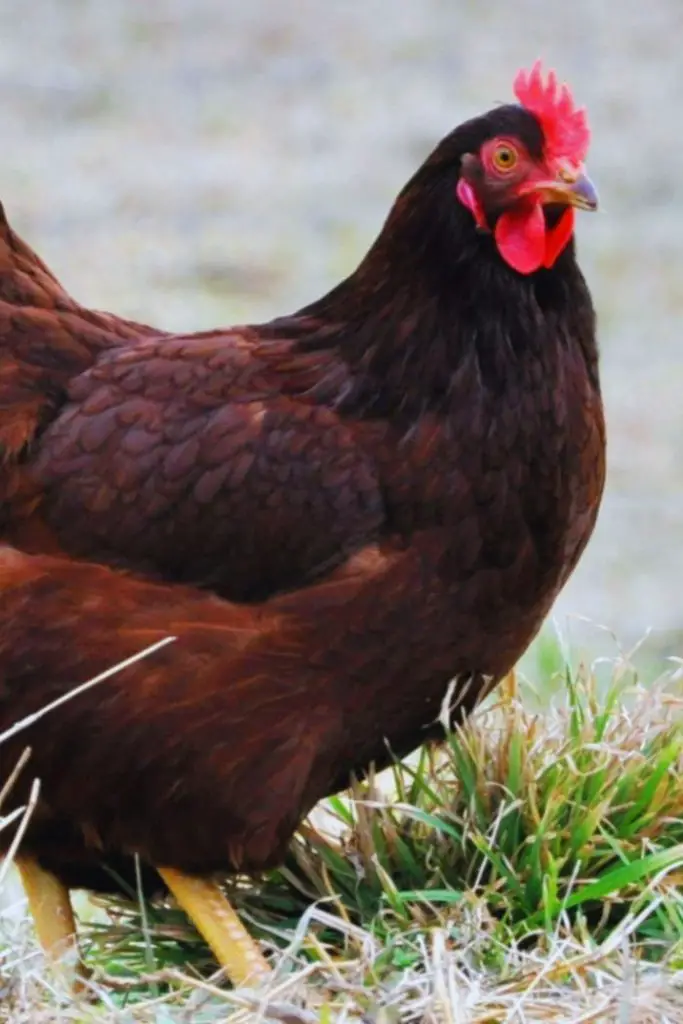
Finally, the Barred Plymouth Rock, with its friendly demeanor, rounds out the list, laying around 180 eggs per year.
These breeds offer exceptional egg production consistency, even in the face of scorching temperatures.
Drought-Tolerant Fowl Choices
In regions prone to drought, selecting chicken breeds that can thrive with minimal water intake is crucial for a healthy and productive flock.
You’ll want breeds that can adapt to arid landscapes, conserving water without compromising egg production or overall well-being.
The Leghorn, for instance, is a popular choice for its low water requirements and high egg yield.
Another option is the Ancona, known for its hardiness and ability to thrive in hot, dry conditions.
The Campine, with its high heat tolerance, is also an excellent choice for backyard chicken keepers in water-scarce areas.
When raising these breeds, be sure to provide adequate shade, ventilation, and dry litter to minimize moisture loss.
Additionally, consider implementing water-conserving measures, such as using dripline irrigation or collecting rainwater, to reduce your flock’s water footprint.

Best Egg Layers for Beginners
Raising chickens for eggs can be a rewarding experience, especially for beginners who start with breeds that are known to be prolific layers.
As a newbie, you’ll want to focus on breeds that are easy to care for and produce a steady supply of eggs. Some top picks for beginners include Leghorns, Rhode Island Reds, and Barred Rocks. These breeds are known for their high egg production, with some laying up to 300 eggs per year.
When it comes to egg production tips, remember to provide your chickens with a balanced diet that includes plenty of calcium to support strong eggshell production.
Make sure they’ve access to clean water and a comfortable place to lay their eggs. One newbie mistake to avoid isn’t collecting eggs frequently enough, which can lead to breakage and encourage pests.
Low-Maintenance Breeds for Busy Owners
As a busy owner, you’re likely looking for chicken breeds that won’t add to your stress levels.
You’ll want breeds that are easy to care for and won’t disturb your morning routine.
Fortunately, there are low-maintenance breeds that fit the bill, including easy-care chickens and quiet morning layers that are perfect for your lifestyle.
Easy Care Chickens
You’ll appreciate the hardiness and minimal fuss of easy care chicken breeds, which thrive on simple routines and are perfect for busy owners who want to collect eggs without sacrificing precious time.
These breeds are ideal for those who want to enjoy the benefits of backyard chickens without breaking a sweat.
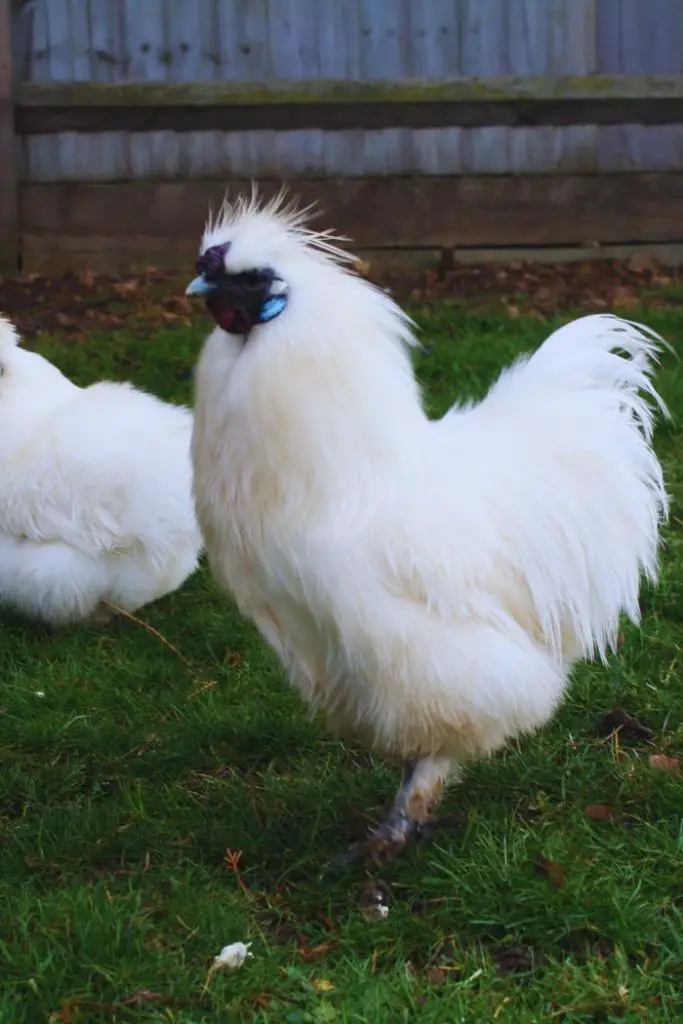
By incorporating low maintenance tips, such as providing adequate ventilation and easy-to-clean coops, you can guarantee your chickens stay healthy and happy with minimal effort.
Easy care breeds also promote simple living benefits, like reduced stress and a more self-sufficient lifestyle.
With these breeds, you can focus on other aspects of your life while still enjoying fresh eggs and the companionship of your feathered friends.
Some popular easy care breeds include Leghorns, Rhode Island Reds, and Barred Rocks.
These breeds are known for their hardiness, docility, and high egg production, making them perfect for busy owners who want to reap the rewards of backyard chickens without the hassle.
Quiet Morning Layers
By choosing quiet morning layers, busy owners can enjoy a peaceful start to their day while still benefiting from a steady supply of fresh eggs from low-maintenance breeds that thrive on simple routines. These breeds are perfect for you if you’re an early riser who values a quiet morning.
As morning songbirds, these breeds will still greet the dawn with a gentle chirp, but they won’t shatter the morning calm with loud, boisterous cackling. You’ll appreciate the gentle hum of activity as they go about their day, laying eggs with ease and requiring minimal upkeep.
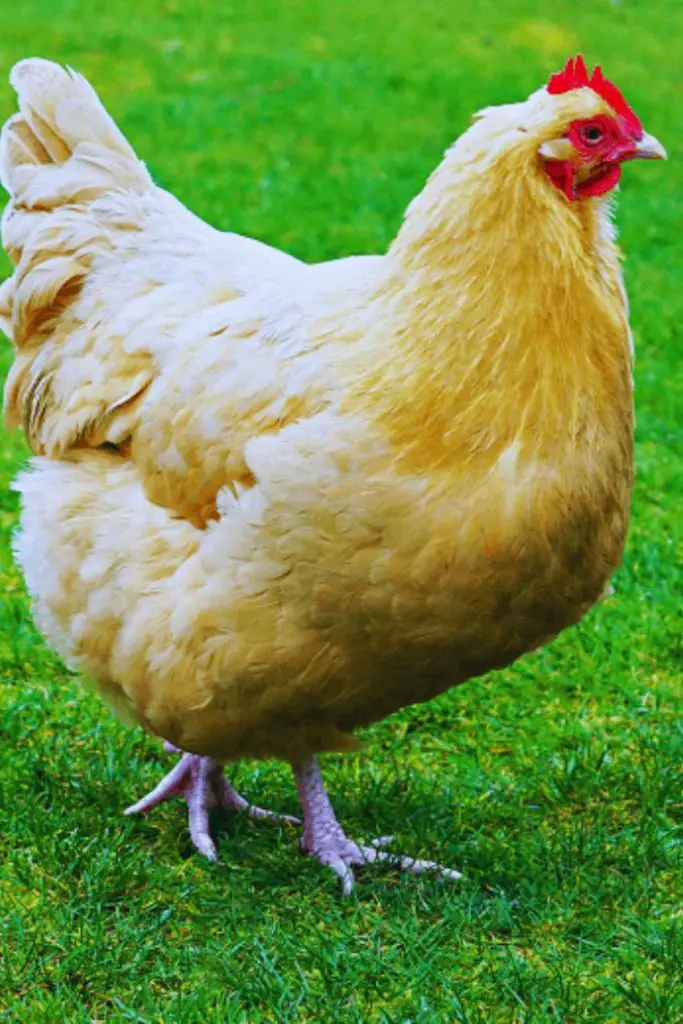
Some top picks for quiet morning layers include the Buff Orpington, Sussex, and Leghorn. These breeds are known for their friendly, docile nature and consistent egg production. They’re also relatively low-maintenance, requiring only basic care and attention.
With quiet morning layers, you can have the best of both worlds: a peaceful morning routine and a steady supply of fresh eggs.
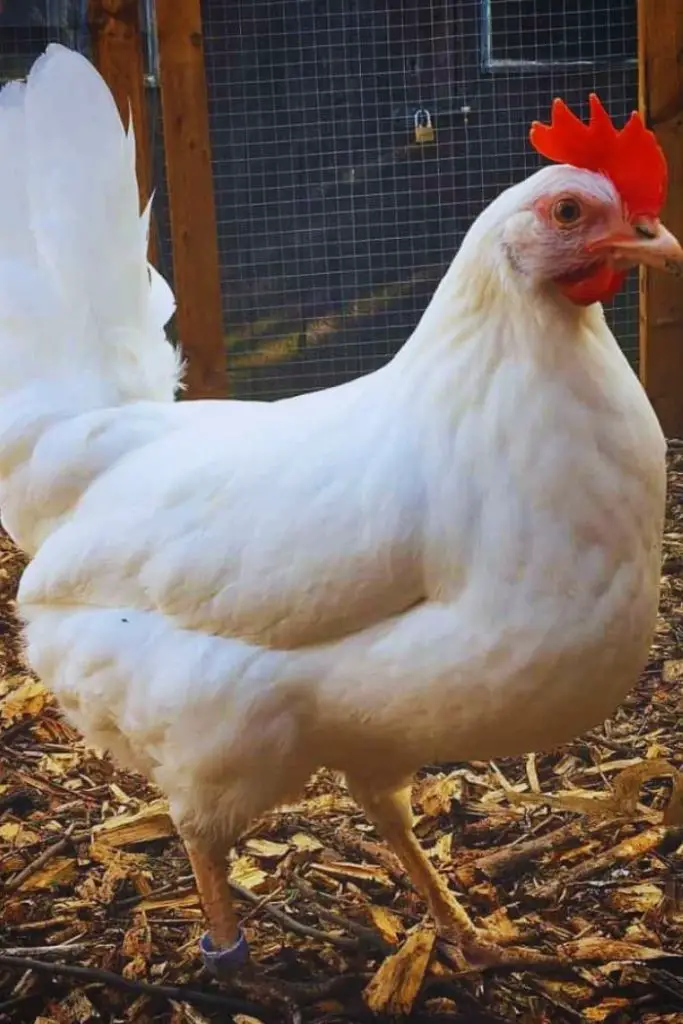
Quiet Breeds for Urban Areas
Living in urban areas often requires accommodating noise restrictions, which is why you need breeds that won’t disturb the neighbors, and fortunately, several quiet chicken breeds fit the bill.
As an urban dweller, you want to guarantee that your backyard chickens won’t be a nuisance to those around you. Look for breeds that are known for their calm and quiet nature.
One such breed is the Brahma, known for its gentle disposition and soft clucking.
Another quiet breed is the Sussex, which is friendly and docile.
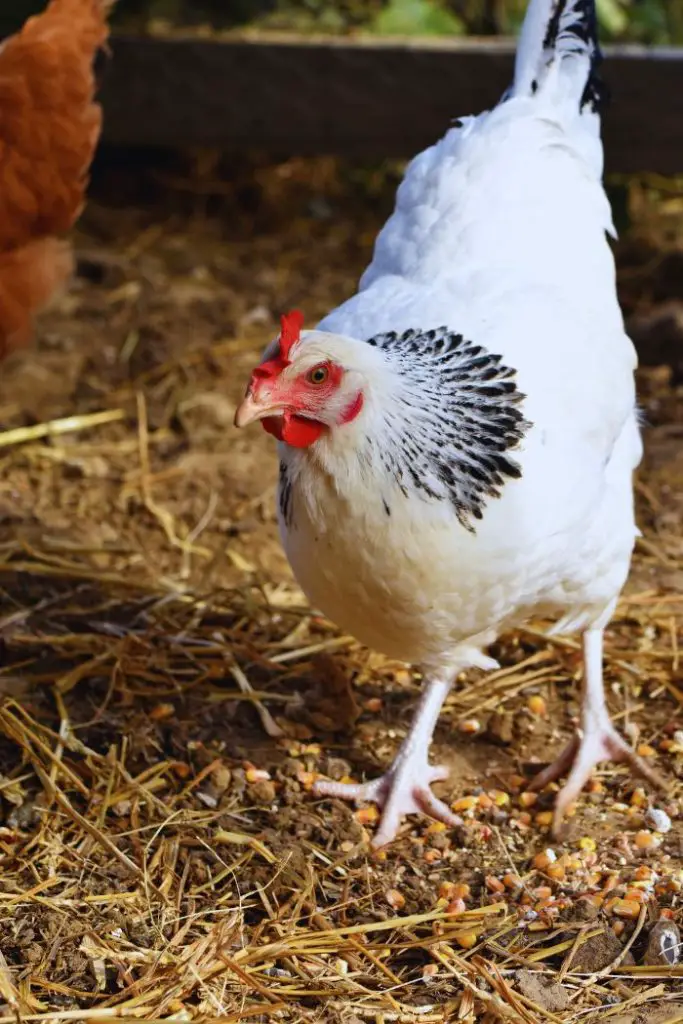
The Polish breed is also a great option, with its gentle and affectionate nature.
These breeds are perfect for urban areas where noise restrictions are in place. They’ll provide you with a peaceful and enjoyable backyard chicken-raising experience.
When selecting a breed, consider their temperament, noise level, and egg-laying capabilities to guarantee you find the perfect fit for your urban setting.
Dual-Purpose Breeds for Meat and Eggs
When selecting a dual-purpose breed for meat and eggs, you’ll want to weigh three key factors.
First, you’ll need to assess the breed’s meat production ability, as some breeds are better suited for this purpose than others.
You’ll also need to examine the breed’s egg laying capacity and growth rate, as these factors will impact the overall productivity of your flock.
Meat Production Ability
Dual-purpose chicken breeds, which excel in both meat production and egg-laying, offer a unique advantage for backyard farmers and homesteaders.
These breeds provide a reliable source of protein and can be raised efficiently, making them an attractive option for those looking to maximize their backyard space.
When it comes to meat production, you’ll want to weigh breeds that boast high meat yield expectations.
Look for breeds that can reach a market weight of 4-5 pounds in as little as 5-6 weeks, such as the Cornish Cross or Plymouth Rock.

These breeds are known for their fast growth rates, which enable them to reach maturity quickly and efficiently.
With proper care and nutrition, you can expect a high-quality meat product that’s perfect for the dinner table.
Egg Laying Capacity
As you consider dual-purpose breeds that excel in meat production, you’ll also want to evaluate their egg-laying capacity, a vital factor in determining their overall value as a backyard flock.
Some breeds are naturally more prolific layers than others, and understanding their egg production capabilities will help you make an informed decision. For instance, the Golden Comet and Wyandotte breeds are known for their high egg production, laying around 200-220 brown eggs per year.
When it comes to egg production tips, one key factor is daily egg collection. Collecting eggs daily will encourage your hens to continue laying, as leaving eggs in the nesting box can deter them from laying more.
Additionally, consider providing a balanced diet rich in calcium to support strong eggshell production. A well-designed coop with adequate nesting boxes and perches will also promote a comfortable and stress-free environment, leading to increased egg production.
Growth Rate Matters
Fast growth rates in dual-purpose breeds can substantially impact the efficiency and profitability of your backyard flock, making it essential to evaluate a breed’s growth rate when selecting for meat and egg production.
You’ll want to choose breeds that excel in both areas, as faster maturity translates to earlier egg production and more frequent harvests.
Rapid development is vital for dual-purpose breeds, as it enables them to reach market weight sooner.
This, in turn, reduces feed costs and allows you to turn over your flock more quickly.
Some breeds, like the Cornish Cross, can reach maturity in as little as five weeks, while others, like the Plymouth Rock, may take up to 12 weeks.
When selecting a breed, consider your goals and resources.
If you’re looking for rapid development, you may want to opt for a breed with a faster growth rate.
However, if you prioritize egg production, you may be willing to wait a few extra weeks for a breed that excels in this area.
Heritage Breeds for Preservation
As you explore into the world of backyard chickens, you’ll discover the importance of heritage breeds and preservation efforts.
Conservation efforts focus on heritage chicken breeds, which are categorized by the American Livestock Breeds Conservancy (ALBC) into Critical, Endangered, Vulnerable, and Recovering statuses to prioritize preservation. These rare fowl are vital to maintaining genetic diversity and ensuring the long-term health of chicken populations.
You’ll find that many heritage breeds are on the brink of extinction, making preservation efforts essential.
Small Breeds for Small Spaces
You’ll find that smaller chicken breeds are perfectly suited for backyard flocks with limited space, offering a unique opportunity to raise chickens even in urban or suburban areas.
These space savers are ideal for those with compact coops or tiny backyards. One popular breed is the Silkie, which requires minimal space and produces fewer eggs, making them perfect for small flocks.
Another breed is the Polish, known for their small size and gentle nature, making them a great choice for urban dwellers.
The Bantam breed is also a great option, as they’re smaller than standard breeds and come in a variety of colors and patterns.
When it comes to compact coops, you’ll want to weigh the pros and cons of breeds that are friendly and docile, as they’ll be easier to manage in close quarters.
By choosing the right small breed, you can enjoy the benefits of backyard chickens even with limited space.
With the right planning and care, you can successfully raise chickens in even the smallest of spaces.
Feathery Breeds for Beauty
Your backyard flock can become a stunning spectacle with the addition of feathery breeds, whose resplendent plumage is sure to impress.
These feathered friends are a treat for the eyes, boasting intricate patterns, vibrant colors, and an air of elegance that’s hard to resist.
If you’re looking to add some plumage perfection to your backyard, consider breeds like the Silkie, with their soft, fluffy feathers and adorable crested heads.
The Polish breed is another standout, featuring a stunning array of colors and a majestic, flowing crest.
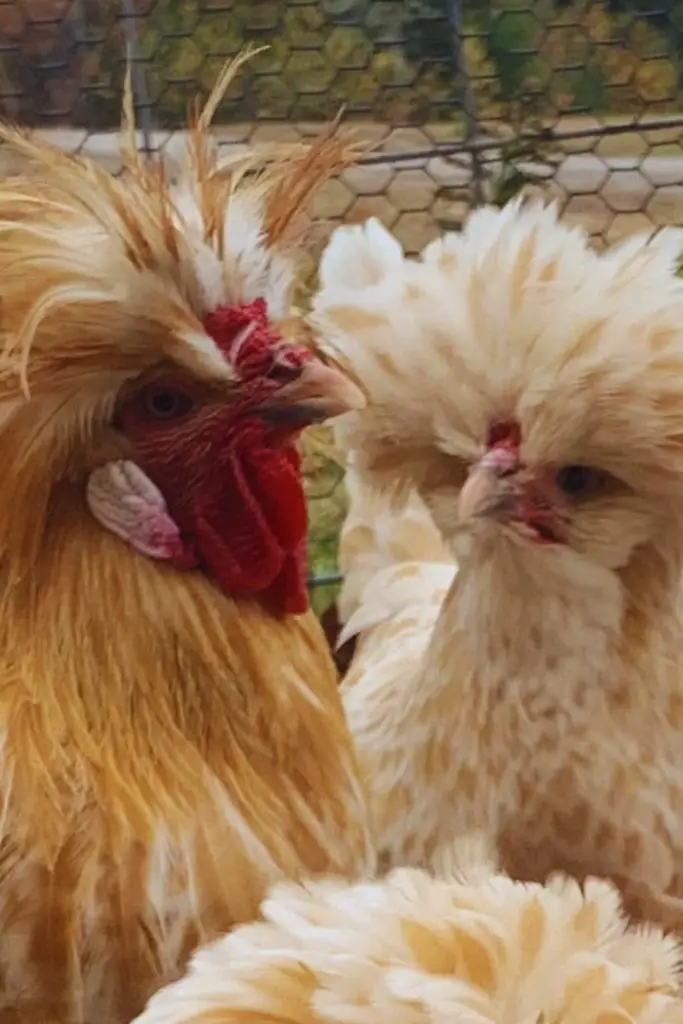
For a more exotic look, try the Houdan, with their striking black and white plumage and elegant, sweeping tails.
Whatever breed you choose, you can be sure of one thing: these feathery friends will bring a touch of beauty and sophistication to your backyard flock.
So why settle for ordinary when you can have extraordinary?
Add some feathery flair to your backyard and get ready to impress!
Broodiness in Certain Breeds
Certain chicken breeds are naturally more inclined towards broodiness, a trait that can be both beneficial and challenging for backyard flock owners to manage.
As a backyard chicken keeper, you’re likely to encounter broodiness in breeds like Silkies, Polish, and Cochins.
These breeds have strong broodiness traits, which can lead to them stopping egg production and focusing on incubating eggs instead.
While this behavior can be beneficial for hatching chicks, it can also be challenging to manage, especially if you’re relying on your flock for eggs.
To manage broody behavior, you’ll need to monitor your flock’s behavior and intervene when necessary.
This may involve removing broody hens from the nesting box or providing alternative nesting sites to discourage broodiness.
Effective broody behavior management is vital to maintaining a healthy and productive flock.
Breeds for Pest Control and Insects
When it comes to raising backyard chickens, you’ll want breeds that can help control pest populations and insects.
Some breeds, like Leghorns and Australorps, excel at controlling pest populations and insects, thanks to their strong foraging instincts and keen eyesight. These fly predators and bug catchers will scour your yard for unwanted critters, reducing the need for pesticides and other chemicals.
Another breed that stands out is the Ancona, known for its exceptional foraging abilities and aggressive insect-hunting behavior.
The Campine is another breed that’s worth considering, with its strong legs and sharp eyesight making it a formidable bug catcher.
By incorporating these breeds into your flock, you’ll not only reduce pest populations but also enjoy a more sustainable and eco-friendly approach to backyard chicken keeping.
With their help, you’ll be able to create a healthier environment for your chickens and your family, while also reducing your environmental footprint.
Breeds Suited for Free-Ranging
If you plan to free-range your chickens, you’ll want breeds that are well-suited to forage and roam freely, such as the Barnevelder, with its calm and docile nature, or the Marans, known for its friendly and curious personality.
These breeds excel at foraging and exploring their surroundings, making them perfect for free-range habits. The Barnevelder’s foraging instincts are particularly strong, allowing them to thrive in areas with limited space.
Another great option is the Australorp, which is known for its high energy levels and love for roaming. When choosing a breed for free-ranging, consider their natural instincts and characteristics.
Look for breeds that are active, curious, and love to explore. This will guarantee they get the exercise and mental stimulation they need to thrive.
Additionally, consider the size of your backyard and the breed’s space requirements. With the right breed, you can create a happy and healthy free-range environment that benefits both you and your chickens.
Frequently Asked Questions
Can Chickens Fly Over a 6-Foot Fence?
You’ll be surprised to know that chickens can fly short distances, but their flight patterns typically won’t take them over a 6-foot fence, as they’re not strong fliers, and their wings are more suited for gliding and escaping predators.
Do Chickens Need Vaccinations or Medical Care?
You must prioritize flock health risks by implementing chicken wellness programs, which may include vaccinations, regular check-ups, and parasite control to prevent diseases and maintain a healthy, thriving flock.
Can I Keep Chickens in an Apartment or Condo?
You can keep chickens in an apartment or condo, but it’s vital to ponder the challenges urban dwellers face with small spaces, noise restrictions, and zoning laws, requiring innovative solutions for coop design and waste management.
How Often Should I Clean the Chicken Coop?
You’ll want to establish a regular coop maintenance schedule, cleaning the coop at least weekly, and consider reviewing cleaning products to guarantee you’re using the most effective and safe options for your flock’s health.
Are Chickens Noisy, and Can They Disturb Neighbors?
You’ll need to ponder local noise ordinances, as chickens can generate significant morning chatter and occasional loud noises, potentially disturbing neighbors, so examining and researching is crucial to prepare for potential sound-related issues.
Conclusion
You’ve considered the perfect breeds for your backyard flock, from gentle companions to high egg producers.
Now, get ready to reap the rewards of raising happy, healthy chickens.
With the right breed, you’ll enjoy a bountiful harvest, pest control, and a beautiful addition to your backyard.
Remember to research and understand the unique needs and characteristics of your chosen breed to guarantee a successful and fulfilling chicken-raising experience.




